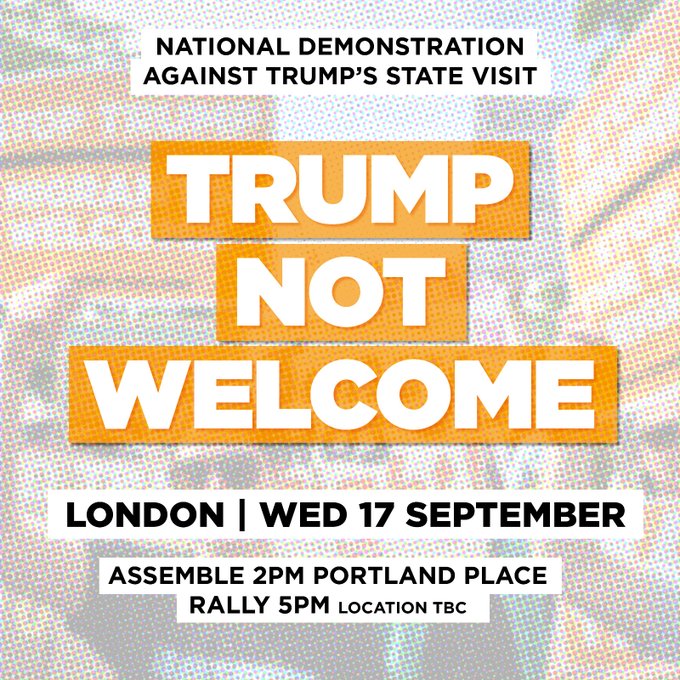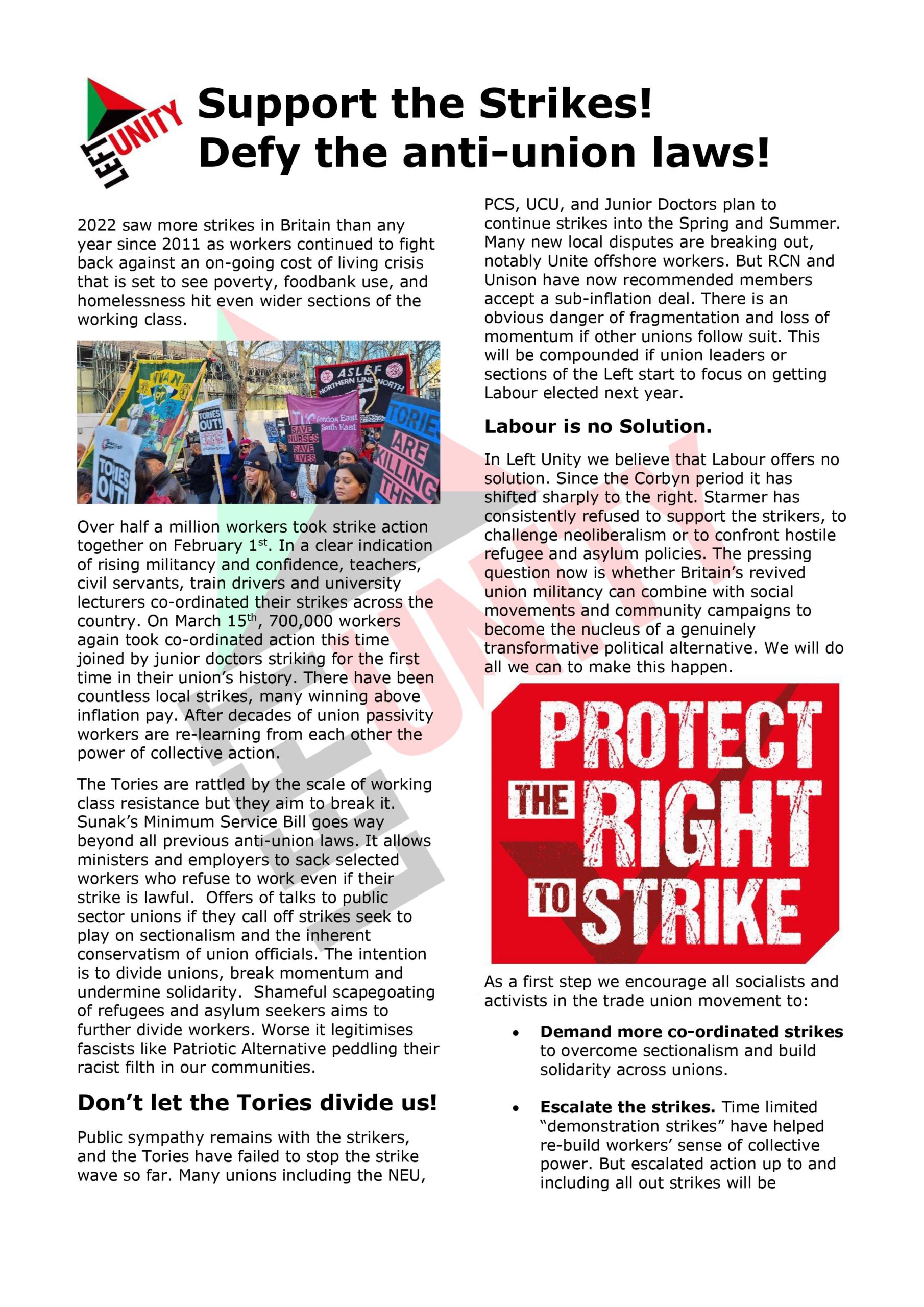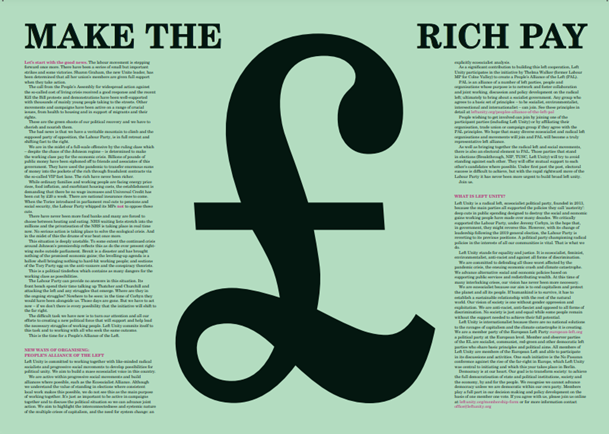The Labour link and the unions
Tim Nelson gives his view of how to build support for Left Unity among trade unionists
The relationship between the trade unions and the Labour Party has once again come into focus recently as a result of tensions between Miliband, the Labour right, and the union bureaucracy; most notably with Len McCluskey and Unite the Union. Given that Left Unity is founded on the premise of being a left wing alternative to the Labour Party, and therefore by definition should be aiming to relate to trade union members, represent their interests, and attempting to break them from their illusions in and support for Labourism, this debate is of fundamental importance for us.
The recent tension between Miliband and the Unite leadership has, in my opinion, been blown out of proportion. Tensions between more left wing union officials like McCluskey and the Labour leadership are real, however both Miliband and the dominant part of the Unite bureaucracy still believe they have more to gain than lose from the continuation of the Labour link. Sabre-rattling, however, solves both their purposes – Miliband, to mollify the Blairites and the establishment; McCluskey, to reassure his members, and left wing supporters, that he is sufficiently combative.
The Unite leadership is subject to pressure from its members, who wish to see a firmer line taken in confronting the government, and this is reflected in the pressure it puts upon Labour. The confrontation between Unite and the Labour leadership came about, not as a result of McCluskey attempting to distance the union from Labour, but exactly the opposite. It was Unite purposely pursuing a strategy of engaging with the constituency Labour parties and attempting to get Unite-supported candidates selected which led to attacks from the right of the party. This approach has not stopped, and is a key part of McCluskey’s political strategy. The plan is to influence society for the benefit of Unite members by active engagement in the Labour Party in the hope of pulling it leftwards.
Much has recently been made of Miliband’s reforms to voting inside the Labour Party, and McCluskey’s suggestion that funding from Unite may be cut. However, membership subs, which are what both are discussing, are not the only mechanism for funding. The union may still give sizable donations, as a lump sum, instead of paying through the mechanism of membership fees. I would therefore argue that while Unite may appear to be at the battle over the Labour link, the Unite leadership not only wishes to continue in exclusively supporting Labour candidates, but will also continue to actively engage with it, as they see the internal struggle within the Labour Party as the key political battleground.
In the case of my union, Unison, the question of the link is even less of an issue. Unison, traditionally, is a top-heavy union. The vast majority of its members are passive (in that they do not actively engage in the union) and the union structures are severely bureaucratised. The union leadership is heavily tied to the Labour Party, and is in fact to the right of most Labour members as many MPs. The Labour link is often raised by many on the left, but is firmly embedded in the union’s culture. This is backed up by regular witch hunting of far left activists, which means the position of the right wing leadership often goes unchallenged.
Both Unison and Unite, along with many other unions such as USDAW and GMB, have a firm position of using their political funds to exclusively support Labour. The Labour Party only allows unions to affiliate (and therefore have voting rights) if the only support Labour candidates. The RMT was expelled from the Labour Party as a result of not adhering to this rule. Therefore, in order for the left to win support for candidates from unions currently affiliated to the Labour Party, we would need to convince them to break their affiliation from the Labour Party completely.
We should not underestimate the scale of that task. Trade unions’ primary function in our society is to win the best conditions for their members within capitalism. For many trade unionists, however flawed the Labour Party may be, it is the best chance to alleviate the damage capitalism inflicts upon their members. “Clout” within the Labour Party is therefore valuable, as it can be used to influence a party which is powerful enough to win control of the government and make real material differences to trade union members’ conditions. In arguing for a break of the Labour link and support for radical left candidates, we are essentially asking that unions abandon their real influence inside the Labour Party for support for a party currently composed of 1-2,000 members, which currently has no elected representatives, and so far has had little to no impact on the trade union movement. Furthermore, we are ignoring the distinction within the trade union movement between the leadership and the working class membership.
The Labour Party is not, and never has been, the political expression of the working class. It is rather the political expression of the trade union bureaucracy. As mentioned above, the role of trade unions is to win the best deal for their members within the capitalist system. Unfettered class war, from the relatively secure position of the trade union leaders, does not seem to be the best policy for achieving that. Compromise seems necessary, even desirable. They represent their members’ interests to the bosses, and then relay the bosses’ position back to the members. The union leaderships therefore often adopt a vacillatory role.
The Labour Party plays a similar role politically. Its leadership, and the vast majority of its membership, accept the “logic” of capitalism and look to win the “best deal” for the working class within that. It negotiates within the capitalist system, therefore mirroring the role of the trade union bureaucracy on the political front. This should not be surprising – the Labour Party was established by the trade union leaders. This is the reason why “tensions” between the Labour leadership and the unions is generally a myth, or at the very least a simplification.
Granted, there are tensions between some left union leaders, such as McCluskey, and the Labour leadership which has since the 1980s been dominated by the right. But then there are also tensions between the left and right within the trade union bureaucracy, and within the Labour Party for that matter. In fact, if we look at the recent attacks from New Labour against Unite, they claimed Unite was signing up members in order to swing votes in favour of left candidates; the exact same charge could be levelled against the USDAW leadership, which uses the same tactics in support of the Blairites. The existence of tensions between right and left does not necessarily represent a division between unions and the Labour Party. The fact remains that Blairism is very much commonplace within the trade union bureaucracy, Unison being the obvious example. A tactic of attempting to break the Labour link through pointing out the obvious – that Labour is not left wing – misses the point. Many trade union leaders do not think the Labour Party should be left wing. Therefore, Left Unity’s attention should be concentrated on the members, particularly the militant minority who not only oppose the link with Labour, but challenge their own leadership as well.
If we are going to build Left Unity within the trade union movement, a fixation on the Labour Link is not the way forwards. As argued above, most trade unionists that support the Labour Party do so because they believe it is the most effective vehicle for representing their members on a political level, even if they have no illusions in it. In order to counter this, Left Unity needs to concentrate itself on making the argument, and proving the necessity, for a party which will fight with and organise alongside trade union members. We should be seeking out, recruiting, and organising those members who want to fight back against capitalism. To do so, we need to take up political issues which the Labour Party and the trade union bureaucracy won’t touch, and rally trade union members around us on that basis.
1 comment
One response to “The Labour link and the unions”
Left Unity is active in movements and campaigns across the left, working to create an alternative to the main political parties.
About Left Unity
Read our manifesto
Left Unity is a member of the European Left Party. 
Read the European Left Manifesto
ACTIVIST CALENDAR
Events and protests from around the movement, and local Left Unity meetings.

Wednesday 17th September: Trump not Welcome
National Demonstration against Trump’s state visit
More events »
GET UPDATES
Sign up to the Left Unity email newsletter.
CAMPAIGNING MATERIALS
Get the latest Left Unity resources.



The trade union movement began from people, who went on strike at a time when when this meant starvation for themselves and their families. Capitalism exists in communist countries, so I don’t understand much of what is said. But trade unions are flogging a dead horse with Labour. With a Free Scotland from 18 September, Labour does not have enough MPs to form a government against the Tory MPs. Once this happens, then Left Unity can make serious inroads into talking direct to union membership about affiliation to the Labour Party, that most trade union members will no longer be voting for. Gandhi observed, People’s Politics Are Their Daily Bread.
You can get your state pension payout even if you stay in your job. See who loses most or all state pension with current laws now or coming before most people’s raised retirement age: https://you.38degrees.org.uk/petitions/state-pension-at-60-now
Promoting this petition will inform people about the threats to nil income in old age from these laws, which Left Unity Party can refute and say will not happen under a Left Unity Party government from 2015.